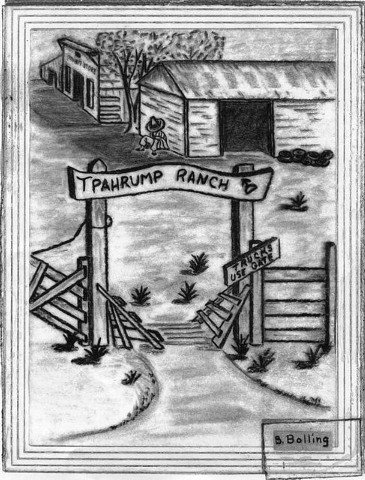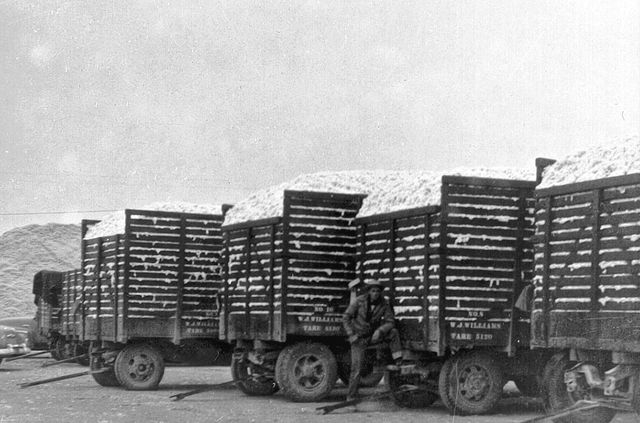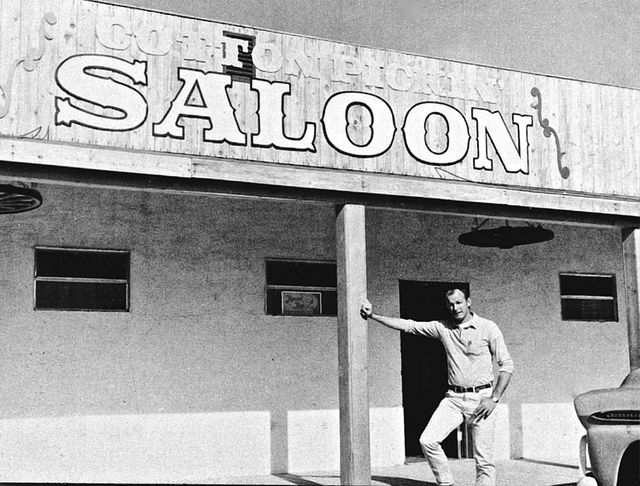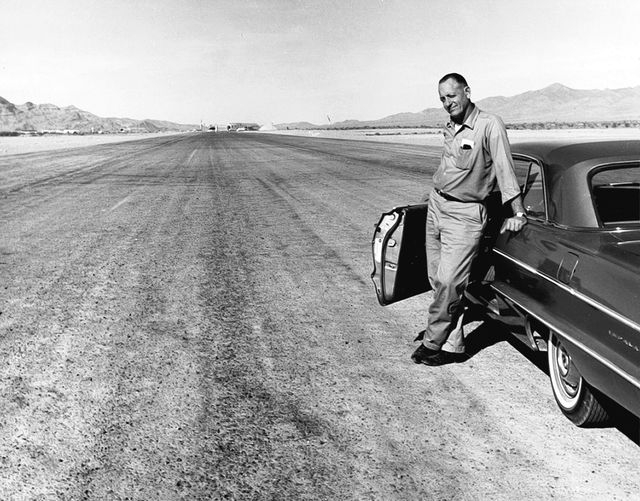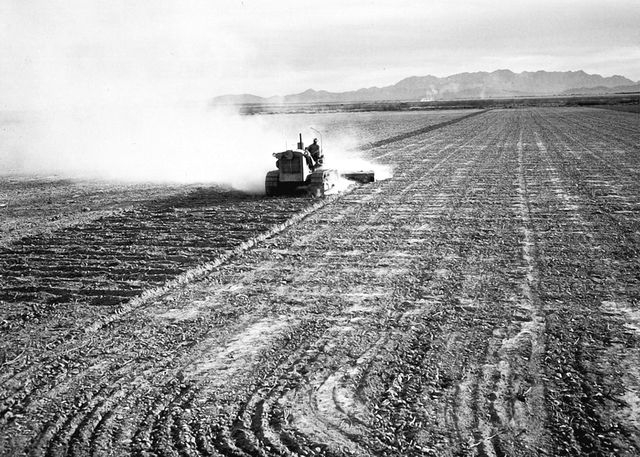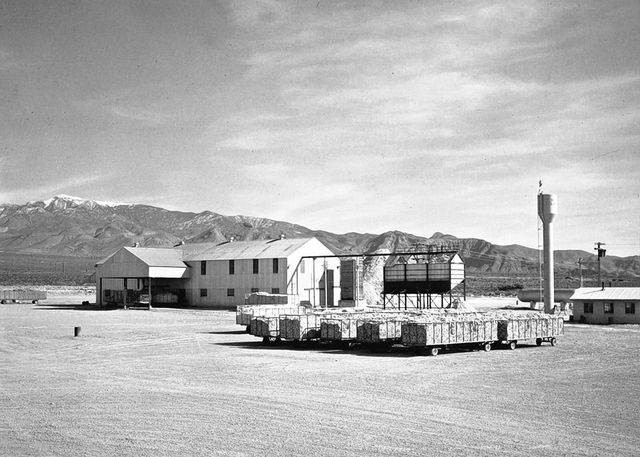IN THE BEGINNING (Part II): Walt Williams was a pioneer in more ways than one
Walter J. Williams purchased the huge Pahrump Ranch in 1957. Though maintaining a home on the ranch, he and his family— his wife, Nancy, and sons Rick and Mark — lived in Las Vegas and Walt commuted daily to the ranch.
Young Mark Williams loved the ranch and rode with his father to Pahrump at every opportunity. You might say Mark grew up on the ranch. I recently completed an oral history with Mark Williams. This column is the second presenting a few of his recollections.
Mark Williams rode back and forth with his father between Las Vegas and the Pahrump Ranch at every opportunity. He thus spent a good deal of quality time with his father. Walt talked and Mark listened. “I loved it,” Mark said. Walt told his son, “It does not matter what you do in life, It doesn’t matter how little or big it is, you’re going to have headaches, so you may as well make it big enough to make it worth your while.”
That was Walt’s philosophy. He would say of a person taking a risk, “That fellow is boring with a big auger,” meaning, of course, that he was dealing with “something of a magnitude that is not peanuts.” Walt admired the Bowman families, who occupied the Manse Ranch, and their farming techniques.
Under his dad’s ownership, Mark believes the Pahrump Ranch reached its peak with about 2,000 acres under cultivation. A D-7 Caterpillar was used to “rip-plow and bulldoze land that had mesquite on it,” opening up “new dirt for farming, disking, and leveling with a Fresno.” There was a lot of mesquite. At times they worked 24 hours a day, the first farm in the area to do so, as far as they knew. The other farming families in the valley worked from dawn to dusk.
There was a bit of an unspoken rivalry between the Bowmans and Walt Williams. Williams, of course, was the newcomer from Texas who had taken over a “big chunk of dirt.”
Mark said that toward the end of one year, his dad was sitting in the little cafe run by Leroy and Mary Vaughn at the corner of highways 160 and 372. The Vaughns also operated a Union 76 gas station on the property. Mark recalled Mary “made the best cheeseburgers and milkshakes.”
On this occasion, Walt was having a glass of iced tea when either Elmer Bowman or his son Perry walked in and sat down. There was a little “perfunctory conversation” as Mr. Bowman politely meandered.
At one point, he asked Williams how his crop had turned out that year. Walt replied, very matter-of-factly,” Well, we got about 1,600 bales.” Walt recalled later that Mr. Bowman “almost fell off his stool.”
He was apparently astounded, since up to that time no one had any idea that that kind of cotton production was possible on the Pahrump Ranch.
Mark reported that his father had a “real reverence” for water in the desert, no doubt in part due to his experience in Texas. When Williams first acquired the Pahrump Ranch there weren’t many concrete irrigation ditches; this resulted in substantial loss of water.
In 1959, Williams embarked on an ambitious effort to install concrete ditches to water roughly 2,000 acres of cotton and alfalfa, resulting in a great savings of water.
He also made an effort to save substantial amounts of water that accumulated at the ends of the irrigation rows. Berms were constructed at low points where the water accumulated and it was pumped back into the system. Such conservation reduced the amount of water that had to be pumped out of the ground.
As a summer wore on, the children found another use for the irrigation ditches. A slick layer of moss would build up on the sides and bottoms of the ditches. The children took great pleasure in jumping into the ditch and letting the thousands of gallons of flowing water carry them along at perhaps three to five miles an hour.
Usually a couple of other kids were stationed down the ditch to help the rider get out. The moss made it slippery, and if a kid didn’t make it out, the water would continue pushing him or her along. Mark described the water riding in the ditches as “a really nice amenity.”
Though Mark’s mother spent the majority of her time at the family’s home in Las Vegas, she played a key role in the ranch’s development. She often interfaced with suppliers and bankers on ranch matters.
It was not unusual for her to meet with politicians regarding issues of importance to the ranch’s operation. She played a key role in the many social aspects associated with making the ranch a success.
Among the prominent Nevadans Nancy and Walt had an affiliation with and entertained in their home were governors Grant Sawyer and Paul Laxalt, Senator Howard Cannon, Congressman Walter Baring and Las Vegas Mayor Oran Gragson. Nancy Williams was instrumental in organizing the first Harvest Festival in the 1960s and for several years thereafter.
Jack Leavitt, a surveyor with roots in Las Vegas, had done a good deal of survey work for Walt Williams on the Pahrump Ranch.
In the early 1960s, he and Walt jointly acquired a 320-acre tract on Valley View in the Amargosa Valley. Later they decided to split it into two 160-acre parcels. One had an irrigation well on it funded by Walt; the other had no well. Jack suggested Walt “go ahead and take the 160 with the well,” obviously at the time the most valuable of the two parcels. Walt replied, “Nope, we’ll flip a coin for it.” They flipped and Jack won the parcel with the well. At that time Valley View was a gravel road. Later, it was paved and Valley Electric put a line right on the corner of Walt’s 160 acres. “So,” Mark said, “that all evened out.”
Jack Leavitt proved to be a “major connection” for Walt Williams with Preferred Equities, a land development company comprised of business people and land developers with deep pockets. Mark said that, early on, his dad had a chance to sell the Pahrump Ranch for a million dollars, but turned it down. He thought, “I need to get this a little further up the road until it meets my needs.” Negotiations between Walt Williams and his partner, Frank Crews, and Preferred Equities ensued.
During the final negotiations, one of the big shots at Preferred Equities said to Walt, “Well, gee, Mr. Williams, we’re really sorry that, you know, you were a failure at your endeavor here.” Mark said his dad shot back, “Hey, buddy, I’ve had a few hundred thousand dollar years; don’t need to worry about me.” Walt had also had a few hundred thousand dollar years in Texas.
Preferred Equities purchased the Pahrump Ranch from Walt Williams and his partner in 1970 for $3.5 million on a seven-year contract. The company immediately became the leading force in the valley for Pahrump’s development into a modern community. The purchase marked the beginning of a new era in valley history.
Mark Williams recently summarized his father’s efforts at the Pahrump Ranch between 1957 and 1970 this way:
“I don’t know how in the world he did all he did. He had about ten tigers by the tail. And he always made it look so easy. He never appeared to be under a lot of stress or nervous; he always had a calm demeanor, with an ever-present sense of humor. Walt inspired confidence, respect and motivation in his employees and business associates alike.”


